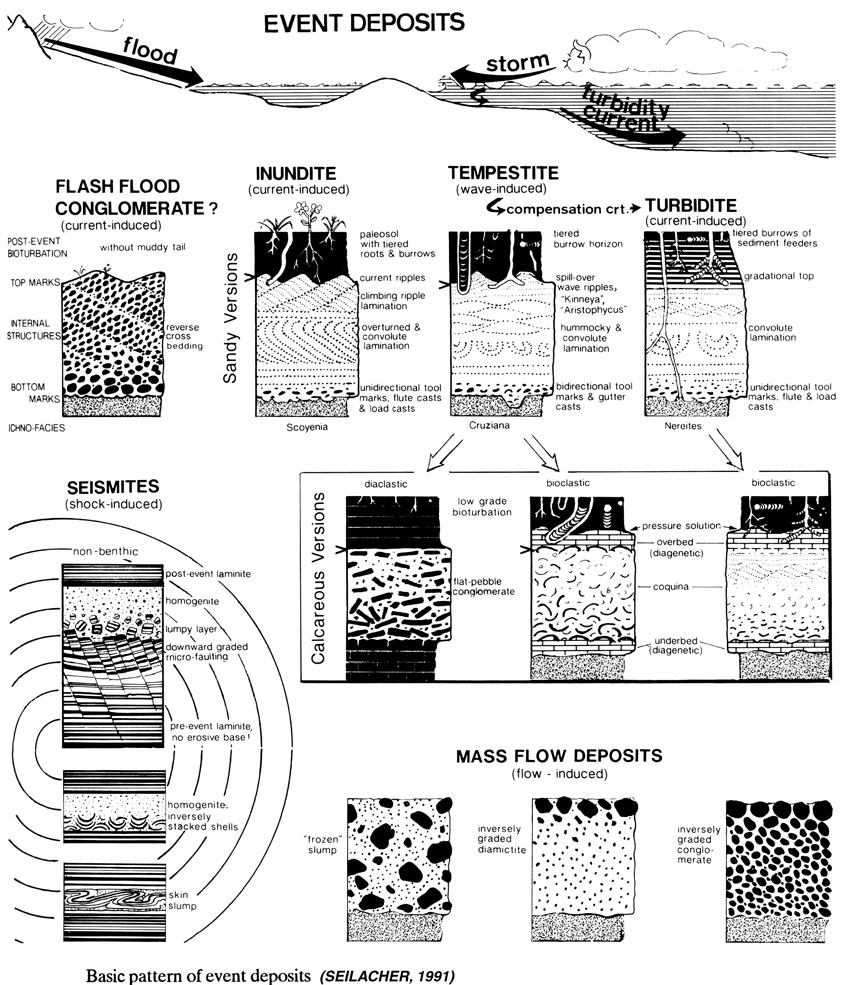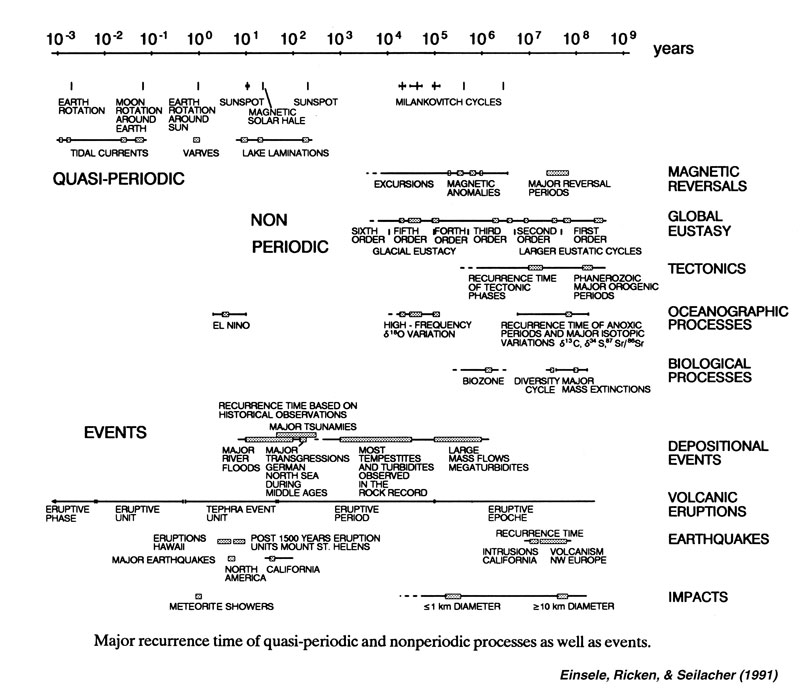|
bed
depositional sequence
flooding surface
sequence stratigraphy
tempestite
turbidite
|
Seilacher (1991) defines event stratigraphy as the sedimentary products of unpredictable, sudden, and therefore often catastrophic: storms, floods, earthquakes, and volcanic eruptions. He sees events as "aperiodic" and of varying magnitudes, the larger the more rare. He notes that larger events wipe out the signatures of earlier smaller ones.
Brett et al (2002) in their GSA abstract focus on event horizons and note how persistent marker beds may represent rare, large magnitude events. They list K-bentonite beds, seismically deformed horizons (seismites), widespread tempestite, or turbidite beds, and smothering or "obrution" deposits. Some of these are the products of rapid deposition as "thin sediment packages, separated by condensed, debris-rich horizons that record "background" conditions. As with ash layers, beds with unique sedimentological, taphonomic, or faunal signatures (e.g., trilobite molt layers) are "fingerprinted" and provide excellent markers that imply widespread (10s of square km) and uniform sediment blanketing of broadly similar environments on gently dipping ramps. However, over larger areas, across facies strike, subtle facies changes may occur within events beds, indicating that the layers are, indeed, isochronous. Various types of event beds occur non-randomly within depositional sequences. Relatively condensed offshore transgressive marine facies may exhibit a disproportionate preservation of rare events due to "event concentration". This effect is exemplified by a frequent occurrence of K-bentonites, and well preserved hardgrounds at flooding surface. Event deposits actually may have higher absolute frequencies in expanded (e.g. highstand ) deposits; however, these horizons are commonly obscured by "dilution". Conversely, seismites appear most frequently in silty to fine sandy ("deformation prone") sediments of late highstands. Regional high resolution event stratigraphy in combination with sequence stratigraphy permits temporal correlations that are orders of magnitude greater than those based on traditional litho- and biostratigraphy."
References Cited
Brett, Carlton e., Mclaughlin, Patrick I., and Baird, Gordon C., 2002, "Preservation of rare events: relationships of event and sequence stratigraphy' Abstract, North-Central Section (36th) and Southeastern Section (51st), GSA Joint Annual Meeting (April 3–5, 2002)
Einsele G., Ricken W., and Seilacher A., (editors), 1991, "cycles and events in stratigraphy", Springer-Verlag, Berlin, Heidelberg, New York 1991. 955p.


|